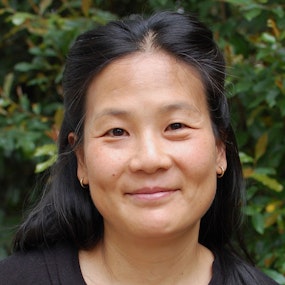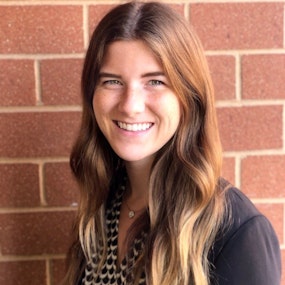ROBERT JOHNSON:
This is the award-winning Public Health Review Morning Edition for Tuesday, September 5, 2023. I'm Robert Johnson. Now today's news from the Association of State and Territorial Health Officials.
HEATHER TOMLINSON:
This session has been very eventful. We've seen over 690 vaccine related bills considered.
JOHNSON:
ASTHO's Heather Tomlinson talking about the number of vaccine and immunization proposals introduced in state legislatures this year.
TOMLINSON:
Many bills sought to expand access to routine vaccination through broaden scopes of practice, allowing minors to consent to vaccination and strengthening immunization information systems or IIS. At the same time. There are also many proposals to prohibit vaccine requirements and loosen requirements for routine childhood immunization.
JOHNSON:
Given the interest in vaccines, Tomlinson says agencies need to develop messaging and a year-round approach to the legislative process.
TOMLINSON:
Public health leaders also have the opportunity to build vaccine confidence with their policymakers and communities throughout the year. They can do this by providing information about evidence-based policies and answering questions about vaccines.
And when providing information to legislatures, agencies should ensure the information is relevant to their jurisdiction, highlights potential cost impacts, and is brief and digestible.
JOHNSON:
Among the topics likely to get more legislative attention, the authority to administer vaccines.
TOMLINSON:
Recently enacted legislation in Virginia and West Virginia expanded the scope of practice for health care professionals, including pharmacists, pharmacy technicians, midwives, and EMTs to administer recommended and approved vaccines. And this is really important as increasing vaccinators in geographic areas can greatly improve vaccine accessibility and boost community vaccination rates.
JOHNSON:
ASTHO has a new blog article about vaccine policy, you can read it using the link in the show notes.
Messaging and messengers are vital to the success of any communication initiative. So is the ability to evaluate online misinformation and disinformation. Connie Moon Sehat is with an organization called Hacks and Hackers. We connected with her in Atlanta, where she came to meet with public health communicators about a new tool that could make that work easier.
Talk about the work that you're doing right now on a new tool to help communicators assess, evaluate and deal with online trust issues.
CONNIE MOON SEHAT:
Sure, thanks. So, we're building the ARTT Guide, which is an online software assistant aimed at helping communicators have trust building conversations around very difficult topics, such as vaccine efficacy.
SEHAT:
And so it does two parts of that equation. First, it helps you analyze the information better, so that you can understand more about it. And that's definitely where aspects of misinformation or disinformation analysis is really important. But equally, it also gives you inspiration for how to respond to specific claims.
There are different methods, for example, when it comes to misinformation correction, so those are in the tool. But there's also other things that you might want to think about. So, for example, maybe it's a better time to empathize with someone, or to ask questions to understand the situation better so that you can listen.
JOHNSON:
Give us an example of how it works. If we were looking at the tool right now, using it somewhere out there in the field, what comes into it? How does it work? What do we get from it? Where do we go with it?
SEHAT:
Sure. So, there's actually two ways that you can interact with the tool. The first is analysis oriented. So, if you have a tweet, or a Facebook post, or some kind of message that you're trying to analyze, you can put that content directly into a text box into the tool. And what happens is, when you hit the button, about 10, different analysis engines are running to kind of help you give deeper insight into what that piece of information is. So, for example, is this coming from an account that is a bot? That's like one piece of information, but also how might this text rate in terms of journalism quality, things like that.
So, it tries to elicit also, is there an existing fact check about this particular content of information. So, it serves as that on the analysis side of the tool. And then in the drafting space of the tool, which kind of acts like a Google Doc basically, is that this is where you could actually think about what it means to respond to that. And so, there's a library of prompts in terms of these. We think about it in terms of three main modes of communication, you can understand better, you can inform someone, or you could connect. And so our library is there to help you with templates. And then in our next phase also with generative AI, to will inspire you to give you ideas about how you can potentially respond to these posts.
JOHNSON:
You're at a meeting with hundreds of public health communicators in Atlanta. You want some of them if they're interested to engage with you on this to help you try it out, debug it, figure out what's good, what's not working about it. Right?
Absolutely, but also to give us ideas about how we can make it better. Because I think this is the thing, right? Like, we have social science experts, we have computer science experts, we have a whole range of experts that are trying to build resources to help health communicators and others figure out how they can better communicate. But one of the things that we need to understand more are, how can we fit into those processes better? Everyone's like, workflow, for example, what are things that would just make life a little easier? And so these are the kinds of things that we want to know so that we can make sure that we can tailor the tool for this audience in particular at NPHIC?
JOHNSON:
And what is the timeframe for the whole thing being ready to just be used?
SEHAT:
Yeah, so right now, what we're doing in this testing period is not only to look at people from NPHIC, for example, to give us that feedback, but we are also doing two other kinds of assessments. So we're doing a cybersecurity assessment with our partners at Georgia Tech. We want to make sure that people can use this tool and be super secure in terms of that.
We're also doing an accessibility audit to try and make sure how can we make sure that this tool is as inclusive as possible as well. And we're going to take back all of that information and learning through the end of this year. And we're also basically building in the generative AI today part starting this fall, so we're aiming for a launch in August 2024.
JOHNSON:
Also, plan to learn how to discuss sexual and reproductive health with young people during an ASTHO webinar planned for tomorrow, Wednesday, September 6, at 3 p.m. ET. The panel includes leaders in Oregon who will talk about their experiences. You can sign up using the link in the show notes.
Finally, this morning, it's time to work on your application to be part of the next group of professionals in ASTHO's Diverse Executives Leading in Public Health program. Past graduates say they were able to use their new skills to launch programs or improve their current work. Some even got promotions, don't miss the chance to take your career to the next level. The application process is open now. There's a link to the program webpage in the show notes.
And if you have a minute, please take the time to follow us and give us a review.
That'll do it for today. We're back tomorrow morning with more ASTHO news and information. I'm Robert Johnson. You're listening to the award-winning Public Health Review Morning Edition. Have a great day.






